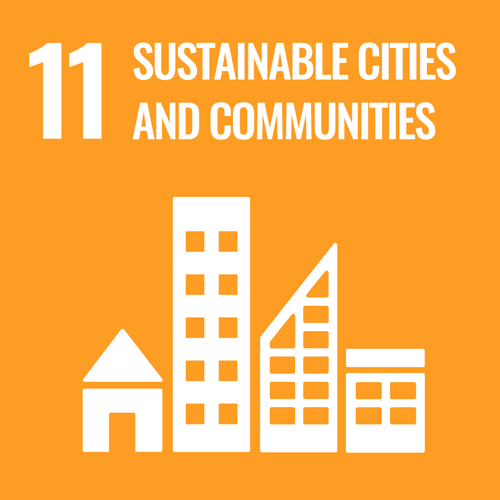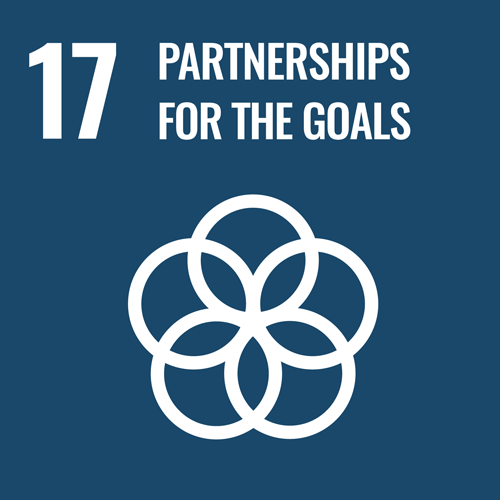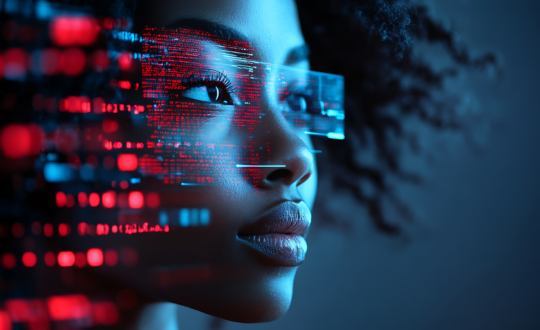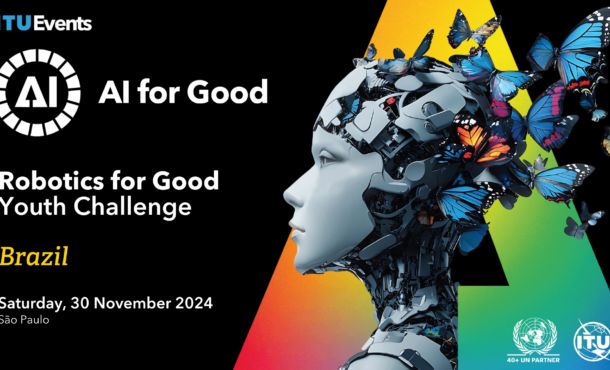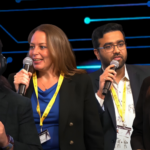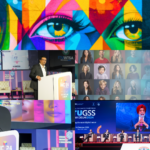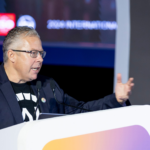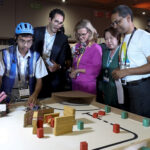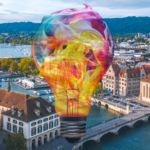Presenting AI artists and visionaries
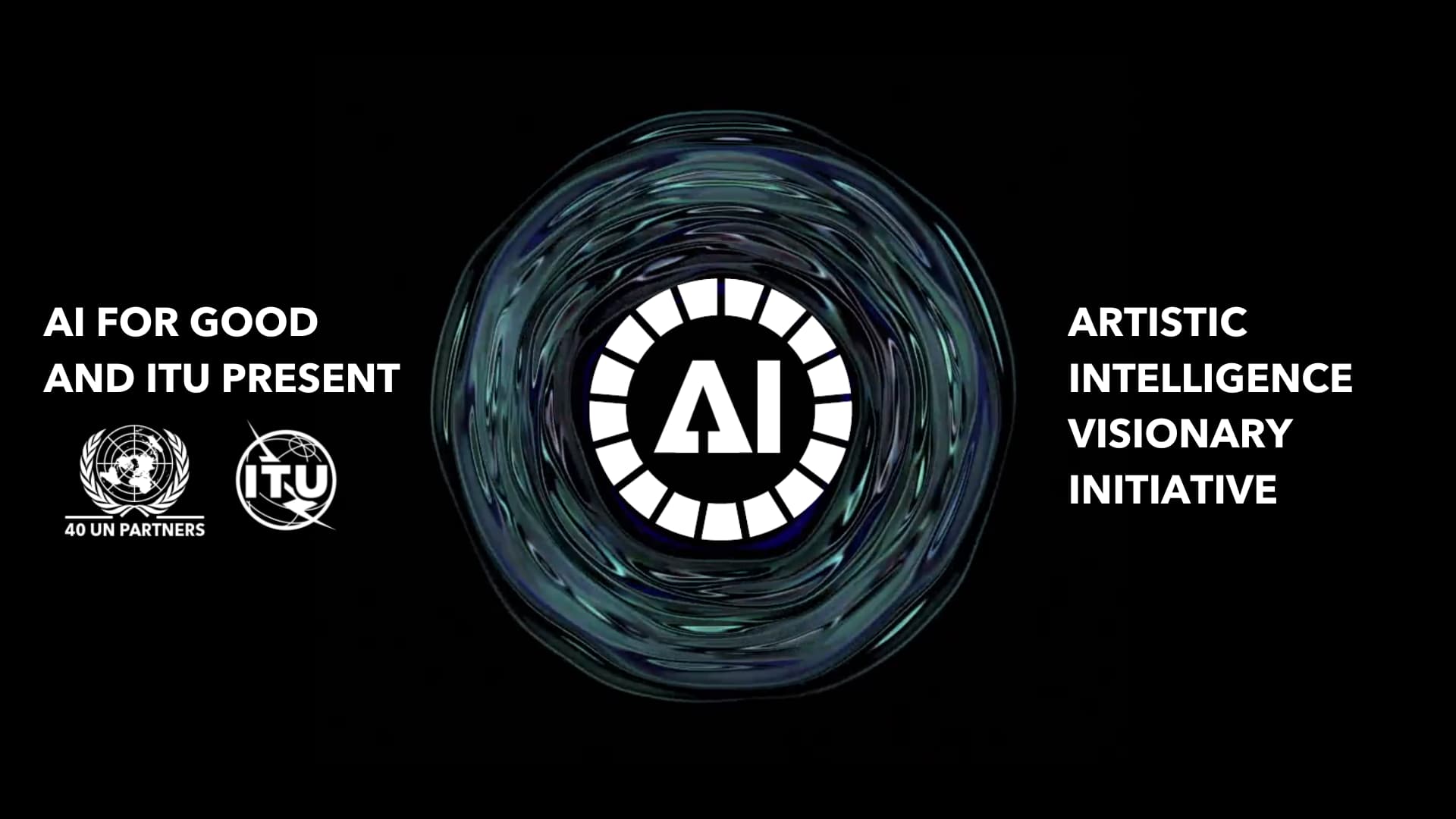
- 16 December 2022
By Celia Pizzuto
Exploratory. Imaginative. Innovative. Together, these three concepts define the work of world-leading artists using Artificial Intelligence (AI) to create unique works of art. These AI artists have been invited to share their visions and perspectives with the United Nations’ community at AI for Good in the Artistic Intelligence Visionary Initiative (A.I.V.I.).
A.I.V.I. is a ground-breaking webinar series created in collaboration with ITU and curated by R100Studios that aims to bring to light global artists whose work helps our understanding of technology and promotes AI innovation and culture.
The initiative was launched this year, with four unique episodes, each one focusing on a specific artist reflecting on key questions related to their artwork, the technology they used to create it, and their ideas on the future of human and machine collaboration.
“This initiative is not speculative, it is about the present day and allowing us to understand possible futures”, said Harry Yeff .
For more insights on Harry Yeff’s vision about the initiative, listen to ITU Technologized new podcast: Interview with Harry Yeff Artistic Intelligence Visionary Initiative here.
Episode One: Christian Mio Loclair
The first A.I.V.I. episode is dedicated to computer scientist, dancer, and poet Christian Mio Loclair. This German artist mostly composes his sculptures, videos and installations with digital devices, algorithms, and data. He defines his work as “the poetic encounter of [hu]man and machine, the friction and the beauty between the digital and the analog realm.”
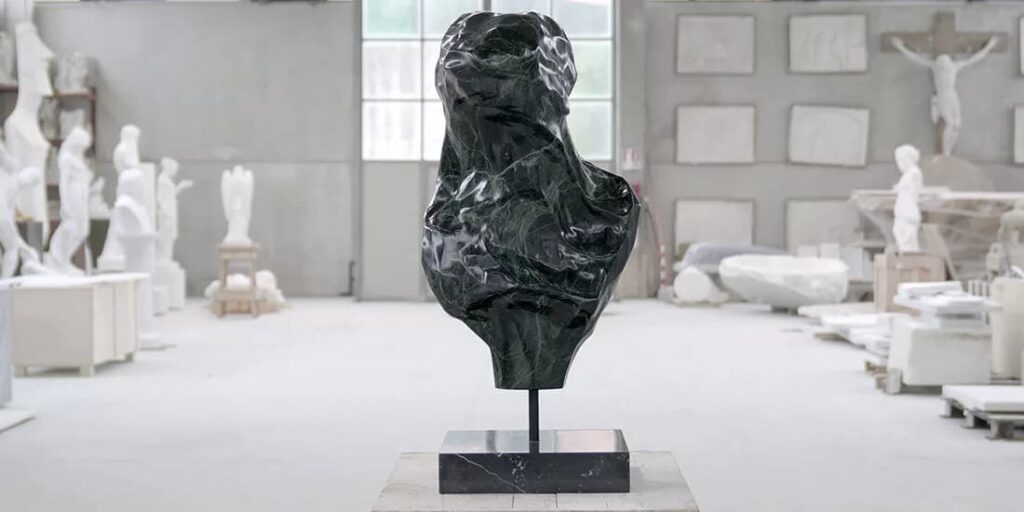
In this episode, Loclair presents Helin, an AI based sculpture created using a customed machine learning algorithm invented at the studio Christian Mio Loclair and inspired by deepfake technology. He explains that he showed the machine 60’000 busts sculptures made throughout history and asked it to create a new one, and it came up with Helin. According to the artist, the way he creates his sculptures could illustrate our possible future relationship with technology, in that machines work just as institutions and brands. They all analyze data and predict what could be done to “help humans to improve the way they live.”
Watch episode one of the Artistic Intelligence Visionary Initiative series below
Episode Two: Sougwen Chung
The second episode of the A.I.V.I. series focuses on artist and researcher Sougwen Chung. This Chinese-Canadian artist is also the artistic director of Scilicet, a London-based studio where she explores human and non-human collaboration.
Her work, that she describes as “sensory mixes of the future,” focuses on hybridity through art and technology. Her various artworks include drawing, performance and installation art designed using different tools like robotics, AI systems, data, and mixed reality. In this session, Chung presents Drawing Operations Unit: Generation 1-5, a project focused on the potential of human and machine collaboration. In a kind of rhythmic partnership with a machine, she co-creates drawings with an AI trained to mimic her own drawing data.
“I’m curious about this question of agency within systems, and think of the practice and these projects as a microcosm to consider the wider implications of things like technological governance and its entangled relationship to the human subject” said Sougwen Chung.
The artist also spotlights her most recent project, Flora Rearing Agricultural Network (F.R.A.N), a work exploring human and machine co-naturality. Through a robotic network connected to nature, she explores the relationship between machine, humans, and ecology.
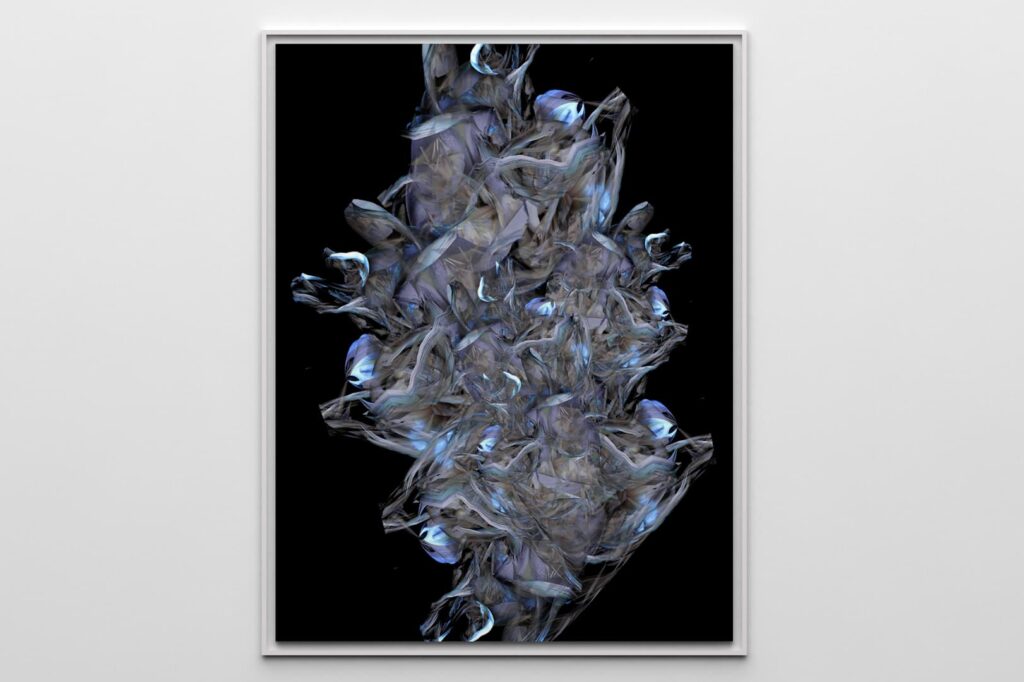
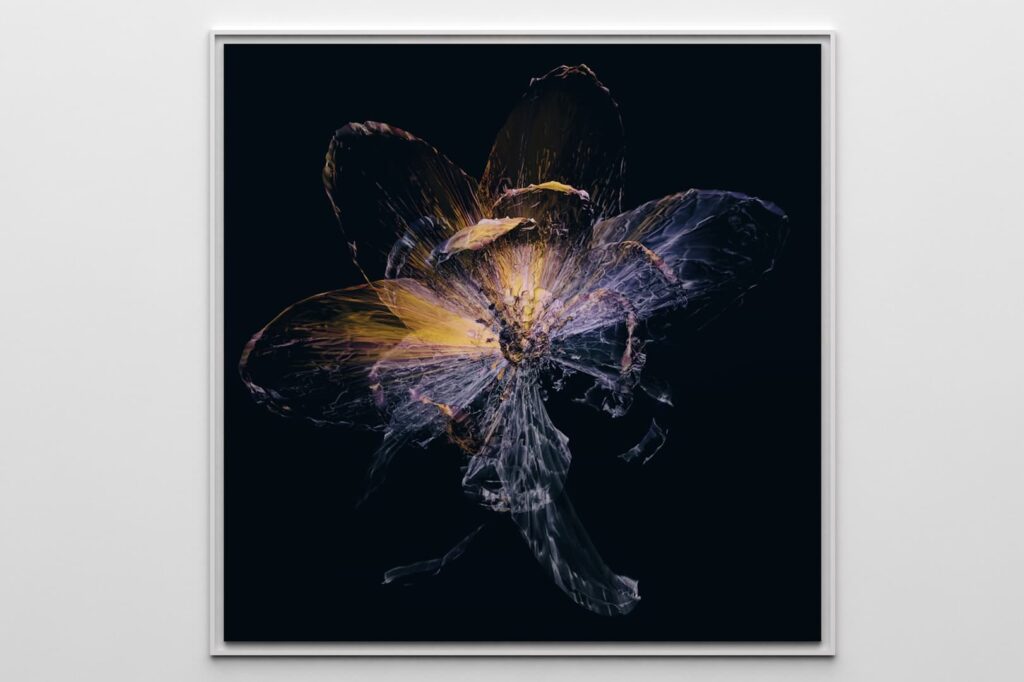
Watch episode two of the Artistic Intelligence Visionary Initiative series below
Episode Three: Sofia Crespo
Sofia Crespo, generative artist and co-founder of the artistic studio Entangled Others, is presented in the third episode of the series. Inspired by the intersections of biological processes and machine learning, she explores the evolution of organic life using artificial mechanisms. Through her work, the artist tries to “explore how we humans create algorithms to replicate or to create something that to us seems like a replica of a biological process”.
In this A.I.V.I episode, Crespo introduces Hybrid Ecosystems, a series about the boundary of nature and technology where she builds technological artifacts that look so real, we find it difficult to distinguish from nature.
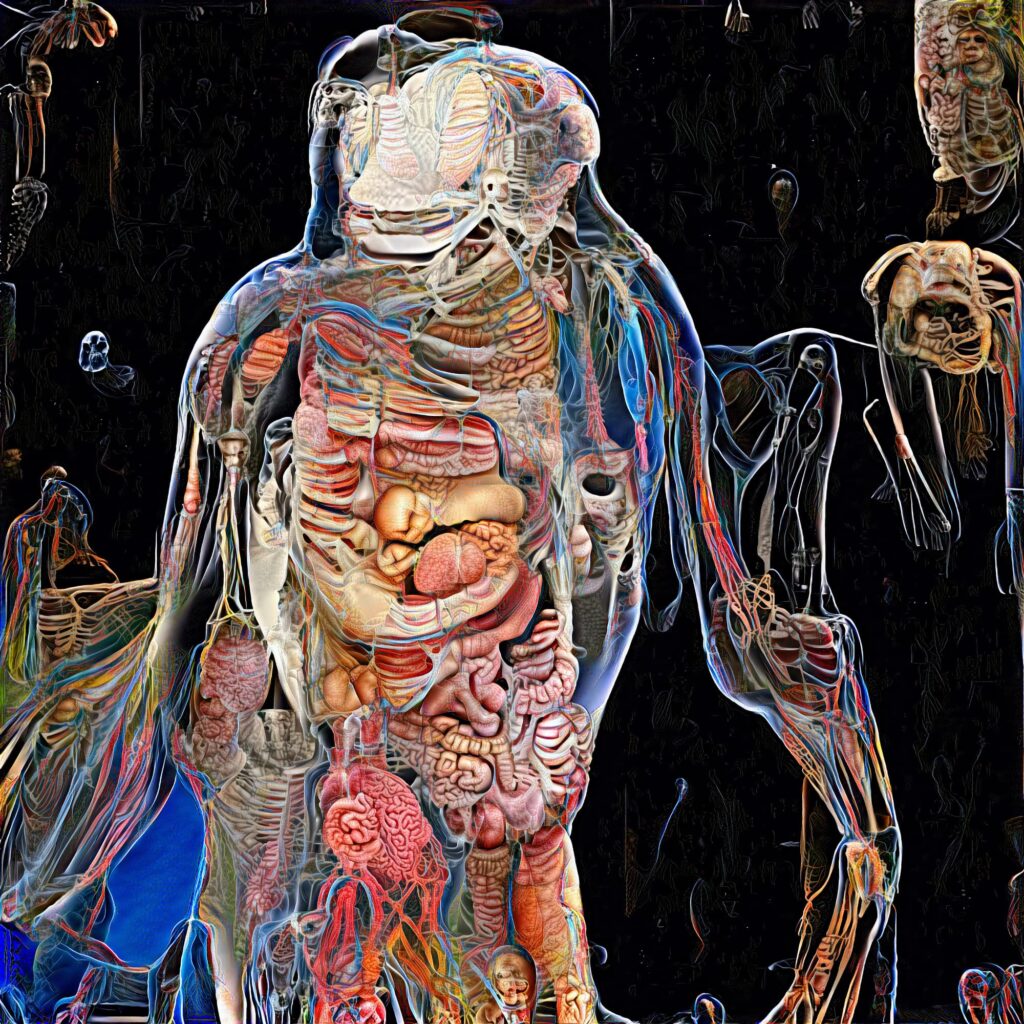
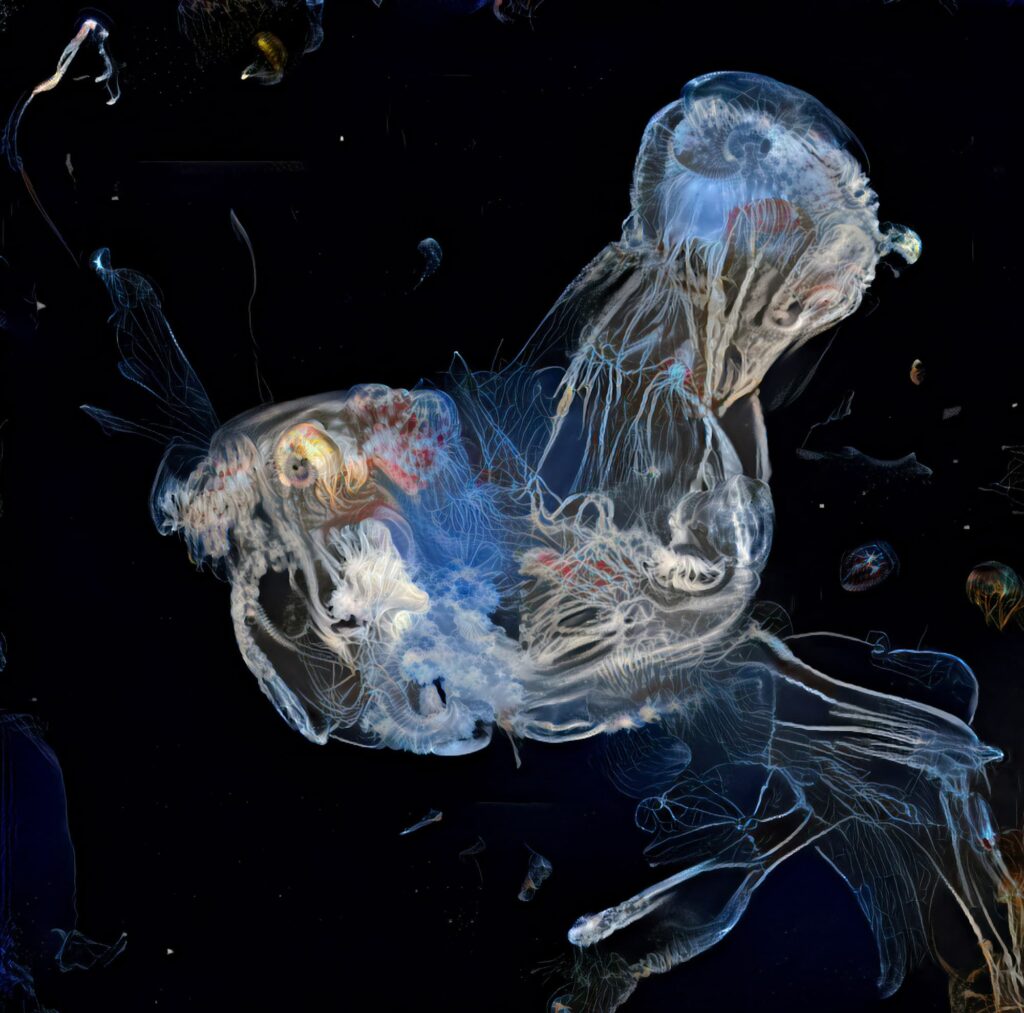
She also presents Neural Zoo, a series of speculative life forms recreating natural-looking textures but that do not actually exist.
“I like a lot the idea that technology becomes naturalized over time and that given enough time and enough use, we take the technology for granted and it stops feeling like a completely separate object to us”, said Sofia Crespo.
Depending on the project, the artist uses a wide range of neural networks like text, text to image models, generative adversarial networks (GANs), audios and others. These tools play a big part in her perspectives for the future, as she hopes that technology, as well as nature, will stop being perceived as separated entities by humans. She believes that, through human and machine collaboration, we will change our way of connecting with the world.
Watch episode two of the Artistic Intelligence Visionary Initiative series below
Episode four: Portrait XO
The fourth episode of the series features Portrait XO, an independent researcher creating musical and visual works using AI and new media. This artist seeks to find humanity between art, music, science and technology through exploration and experimentation of how far we can take sounds and storytelling through latent space.
“AI is not sentient, but AI can possibly make humans more sentient. And I do think that human machine collaboration used with AI in this way can offer a whole new level of intimacy in the way we work as creatives” said Portrait XO.
The work presented in this episode is an AI audiovisual piece called Plastic Skin, in which she co-created lyrics with an AI version of her voice. She then recorded herself performing and used the video as input for a text to video clip guided VQ-GAN Open Source Model, telling the story of the meaning behind the song through text prompts.
To create her artwork, Portrait XO uses different types of technology, from the previously mentioned VQ-GAN Open Source model, to a recording software and a custom sample RNN model.
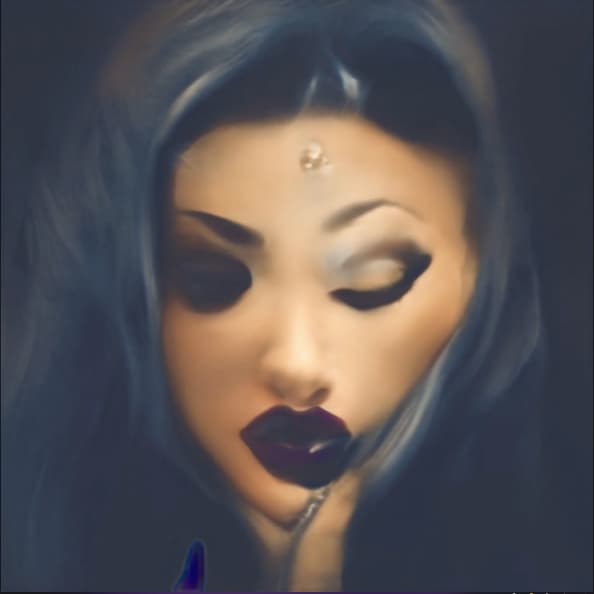
According to the artist, the future of AI is going to be full of surprises. She thinks it is also crucial for more people, not just artist, to explore new narratives around AI to really understand its impact on our shared future.
Watch episode four of the Artistic Intelligence Visionary Initiative series below



